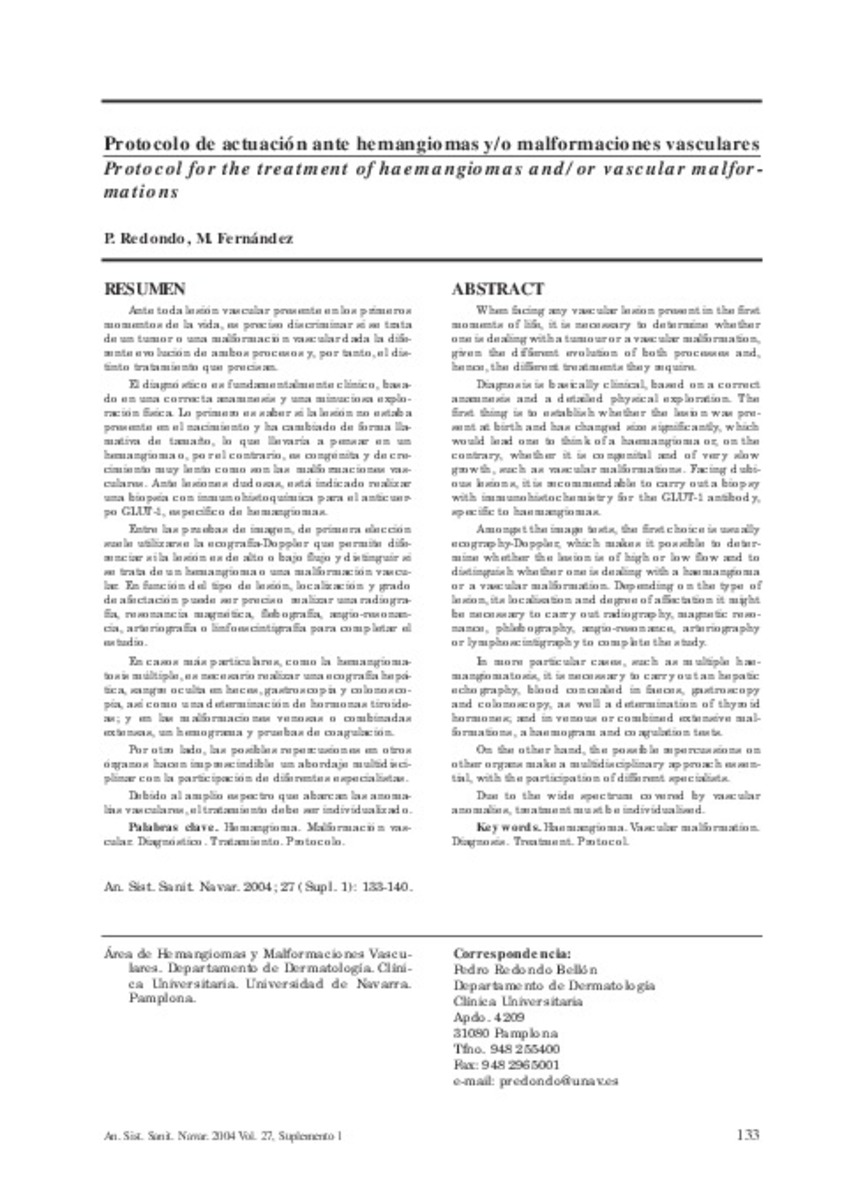Protocolo de actuación ante hemangiomas y/o malformaciones vasculares
Otros títulos :
Protocol for the treatment of haemangiomas and/or vascular malformations
Palabras clave :
Haemangioma
Vascular malformation
Diagnosis
Fecha de publicación :
2004
Editorial :
Gobierno de Navarra. Departamento de Salud
Cita:
Redondo P, Fernandez M. Protocolo de actuación ante hemangiomas y/o malformaciones vasculares. An Sist Sanit Navar 2004;27 Suppl 1:133-140
Aparece en las colecciones:
Estadísticas e impacto
0 citas en

0 citas en

Los ítems de Dadun están protegidos por copyright, con todos los derechos reservados, a menos que se indique lo contrario.







